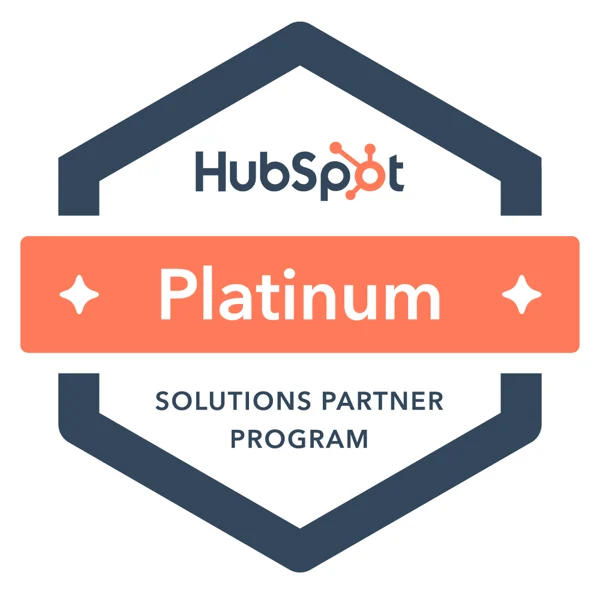January 23, 2019
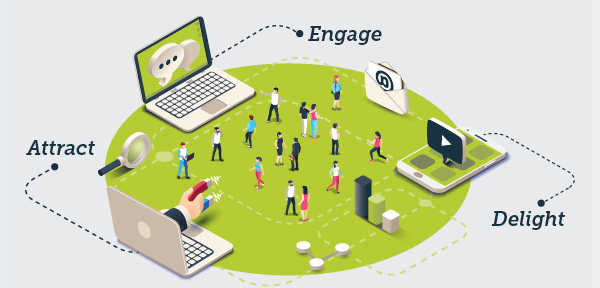
Think about the last time you made a major purchase. Chances are, you researched the product online. Maybe downloaded a brochure. Read reviews. Asked the opinions of people you trust. And, if possible, took it for a trial run before you went ahead and made the purchase.
<< Are you ready to jump start your B2B business? Find out how! >>
Our customers carry out that same process, all the time. But the quality of their journey and their level of satisfaction often depends on their experience as they move through the funnel. You’ve probably seen the funnel before, which represents the three stages customers go through from their initial awareness of the product or service, learning more about its features and benefits, and the decision to purchase.
Simply put, the top of the funnel (TOFU) is where you build awareness about your company and the problem you address, the middle of the funnel (MOFU) is where you teach people how to choose a solution, and the bottom of the funnel (BOFU) is where you explain why your product is the best solution.
The funnel has a major weakness: It doesn’t take into account that the people coming out of the bottom of the funnel can have a major impact on the people going into the top of it — in fact, people at the bottom of the funnel can feed those going into the top of the funnel.
Conversely, the people leaving the bottom of the funnel can prevent other people from entering the top of the funnel.
The attitude of people when they come out of your funnel has a direct impact on the number of people who are willing to enter the top of the funnel.
The Flywheel as a Growth Engine for Your Business
Funnels produce leads. What they don’t do is help you close the leads, keep your customers happy, or take advantage of the customers you’ve already acquired to help you grow. That’s where the flywheel comes into play and the inbound marketing methodology helps it spin.
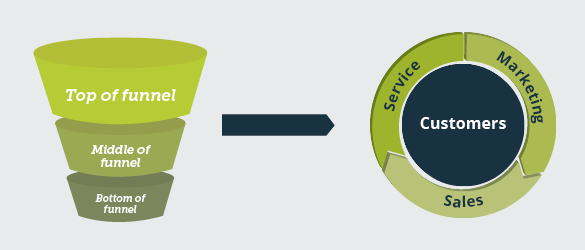
It’s all about crafting relevant content and carrying out structured activities at every stage of the flywheel. Through scoring and lead nurturing, efforts are focused on the strangers who can be converted into satisfied customers.
The rotating flywheel represents the growth of your business. Happy customers help fuel your growth. How? By buying from you again, or bringing new customers to you by promoting your product to their extended network of colleagues, friends or family.
“The rotation of the flywheel represents the growth of your business, and happy customers provide the energy that fuels that growth.”
Kyle Jepson, Hubspot Academy
All your marketing activities should be focused on creating customers who will inject good energy into the flywheel and speed up your company’s growth.
Combining Funnels and Flywheels
While the flywheel represents your company as a whole, funnel charts can help you improve a particular aspect of your business performance, for example, your sales funnel. Analyzing it can help you understand where you’re losing customers along the way.
When your entire company starts thinking about accelerating the flywheel as a whole instead of focusing on improving individual funnel metrics, major strides can be made. That’s when the real growth happens.













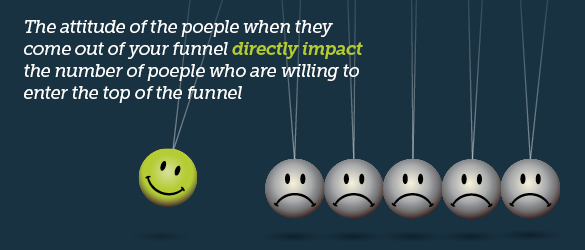
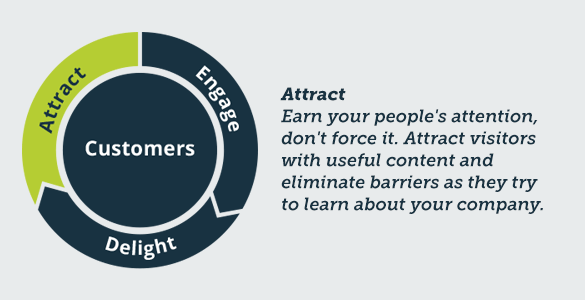

 As a company that leads Israeli B2B companies to success in the global market, we’ve developed a structured five-step process to ensure marketing directly advances the company’s business decisions.
As a company that leads Israeli B2B companies to success in the global market, we’ve developed a structured five-step process to ensure marketing directly advances the company’s business decisions.
 The beauty of this process lies in its clarity. Every marketing effort is measured by its direct contribution to the business. If it’s not in the plan, there’s a reason.
It may sound simple - and it is - but it requires you to pause, plan, and sometimes partner with an external professional. Someone who will hold you accountable, challenge your thinking, and keep you focused. Someone who’s done this many times before and knows how to steer the process.
The cheetah doesn’t wait - and the year won’t either. Now is the time to focus your marketing on what truly matters for your business and drive real impact. We’re here to help.
The beauty of this process lies in its clarity. Every marketing effort is measured by its direct contribution to the business. If it’s not in the plan, there’s a reason.
It may sound simple - and it is - but it requires you to pause, plan, and sometimes partner with an external professional. Someone who will hold you accountable, challenge your thinking, and keep you focused. Someone who’s done this many times before and knows how to steer the process.
The cheetah doesn’t wait - and the year won’t either. Now is the time to focus your marketing on what truly matters for your business and drive real impact. We’re here to help.





